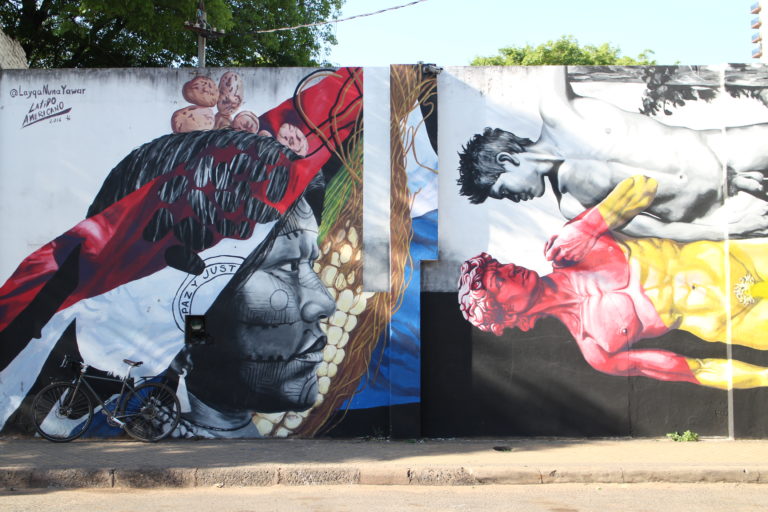
Catching Up: The Evolution of Street Art in Paraguay
09 April, 2018Oz Montanía, an acclaimed illustrator and street artist from Asunción, is one of the first people to ever have painted on Paraguayan walls back in the late 1990s. After that a lot has happened, but only very recently has street art began to gain ground in the eyes of common Paraguayans. And we owe a lot of that to Oz. As a pioneer in the country’s graffiti scene, he has worked his ass off keeping this multifaceted subculture alive and finally bringing it to an ever-growing audience. This had culminated in the opening of Asunción’s first graffiti shop and the city hosting one of the first Latin American urban art festivals. Gone are the days of paint smuggling and a few random tags in street corners. So, homeboys, watch out: Asunción is breaking loose! Meet Oz Montanía and discover the rise of Paraguayan street art…
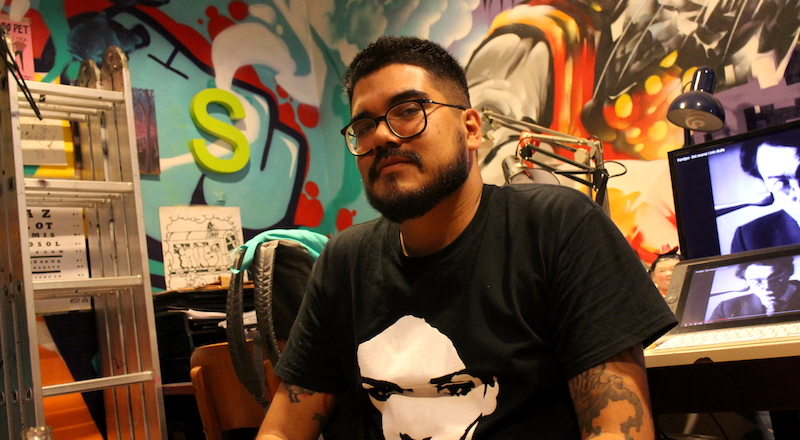
Early days – influence from abroad
“In Paraguay, everything happens later than in other countries”, Oz Montanía begins telling me calmly, while sitting comfortably on a red sofa in the back room of his shop. “Whereas in Brazil street art existed already around 40 years ago, it didn’t land in Paraguay until more than 20 years later”, he continues, stating that even in the 1980s, the only people who even knew such a thing existed, were the people who had lived or travelled in the US or Europe and had seen a part of this underground culture. “When I was 11 years old, me and my friends would meet up in a skate park and exchange magazines and videos that we would then look at in awe”. Gladly, Oz’s parents owned a book distribution company, so reading about things came naturally for him. Hence, he would suck up all the information he could find from those worn-down magazines.
It wasn’t until the late 1990s that the first tags started appearing on the streets of Asunción. “In the beginning, we were around five people… Diestro, Saturn, Legacy, Joma…spraying on walls in the entire country”, Oz tells me. “We were literally only a handful of people and we all knew each other personally”. But all of a sudden, foreign tags started appearing out of nowhere. “It was like a dialogue. There was someone else doing the same thing as us. Someone we didn’t know and that was really cool.” Bit by bit, the scene started to grow.
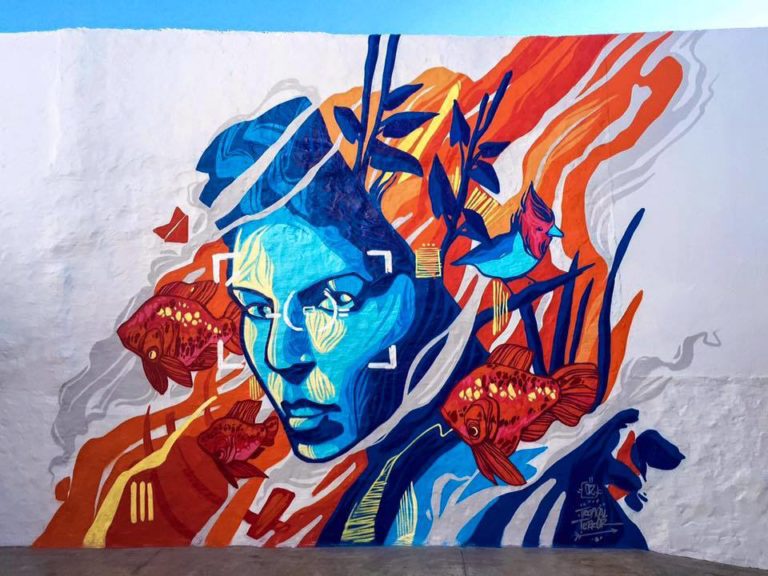 One of Os Montanía’s murals
One of Os Montanía’s murals
The rise of self-taught smugglers
One of the biggest challenges in the beginning was that there was no one to teach things. Although Oz Montanía had been drawing since he was a kid, he never studied visual arts. Therefore, graffiti was something to be learned from scratch. As it was all so fresh, the good thing was that there were also no rivalries between artists. “The scene is quite different in other countries. In Brazil, for example, there has always been a huge clash between the pixadores and the graffiti artists, and the graffiti artists are very careful not to paint on the works of pixadores and vice versa. Because if they did, they could get some beef”, Oz tells me.
Another challenge was paint acquisition. Still only a year ago, there was no established place to buy quality paints in Paraguay. There was no single graffiti shop in Asunción where you could buy street art and graffiti supplies so artists would smuggle paints across borders, mainly from Brazil. “We would use whatever means we could imagine”, Oz Montanía remembers and tells me that sometimes paints were even brought into the country on small boats. “Just for personal use, not for selling”, he adds. Then, around 13 months ago, Oz’s shop, PowerLine opened. “We started this shop with my business partner, Santo, who I met at a Meeting of Styles event in Buenos Aires many years ago. He had a shop in Buenos Aires, but when the economy of Argentina started going down, around four years ago he had the idea to start a second PowerLine in Montevideo, Uruguay. Then, a couple of years later, we started this one in Asunción.” Now, PowerLine is also an official distributor of the Spanish paint brand, Montana Colors, so it seems that the times of illegal smuggling are over. At least for Oz.
PowerLine Asunción
O’Leary 299 esq Palma, local 6
Asunción 1221
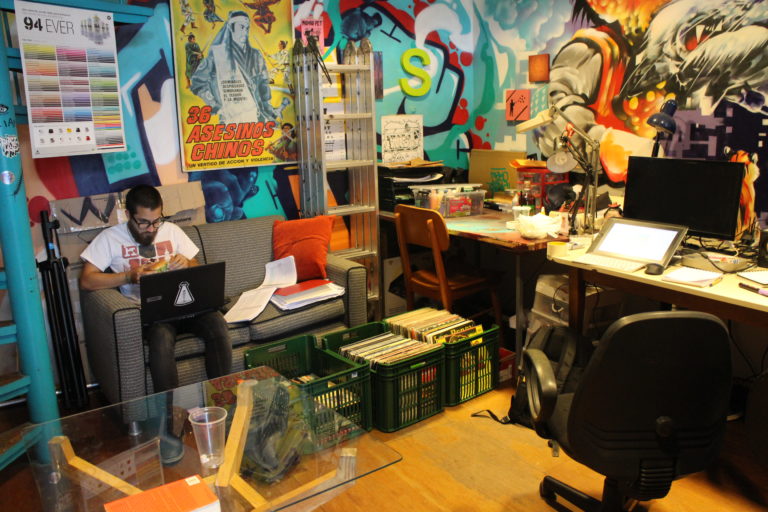 PowerLine Asunción
PowerLine Asunción
Present day – creating a local identity
Nowadays, there are around 80 street artists in Asunción. “The kids who start painting nowadays, don’t start from precariousness. They have it a lot easier than us pioneers, because they can see and learn things on the streets, in magazines, on YouTube…”, Oz says. In addition to that, many new street artists have studied either graphic design or fine art, which is quite different from how it all started. However, according to Oz, the identity of Paraguayan street art is yet to be discovered and developed.
“There’s a long road ahead of us”, he says and continues that as it’s all still very new, what Paraguayan street artists lack is long-term, constant practice. “This applies to everything in this country, but the good side of it all is that it’s super easy to develop something new and be the first one here to do it”, he says. In fact, Oz’s vision for the future is to live in Paraguay, but at the same time travel and import what he learns abroad into his home country. “Before there was a lot of brain-drain from here to other countries, but nowadays I think there’s a booming generation of people who want to make art, music and other creative things. People, who don’t want to see this place asleep anymore”, he speculates.
The country of no rules
As with other countries, Paraguay has seen a separation between street art and traditional graffiti, but according to Oz, both parties coexist in harmony. “The common denominator for us all is that we want this culture to grow”, Oz says and adds that this doesn’t leave any time for fighting. The only challenge is that in Paraguay there are no rules. “In other countries, graffiti artists are very orthodox”, Oz says. “The rules of the game are strict: you can’t write on someone else’s work, you have to be anonymous, you can’t make money with it, real graffiti is illegal, etc., but here, people do what they want”, he says. This can be seen as both good and bad and even Oz doesn’t agree with all the rules. “I don’t understand, for example, why a graffiti artist couldn’t earn money with what he does. MCs do it, DJs do it, b-boys do it… so, why shouldn’t writers do it?”, he asks. In fact, if it weren’t for a couple of commissions received doing some big walls, the whole shop we’re sitting in wouldn’t exist. “Traditional graffiti will and should always keep on existing, but what matters in the end is that everything is valuable. Illegal or not, paid or not”, he concludes.
LatidoAmericano: urban art in Paraguay
In August 2016, Asunción was the first non-Peruvian city to host LatidoAmericano, a Latin American festival for urban art. The curators of the event were Oz and Peruvian artist Entes. But, how did it all start? “In 2011 I met Entes and Pésimo, two Peruvian graffiti artists who belong to the same crew as me, DMJC (one of the oldest crews in Peru with around 35 members), at an urban art event”, Oz begins. “We painted side-by-side and got into talking about the lack of a more Latin American, native event”, he continues. By that time, they had all attended various street art events around the world, but the dominance in all of them was always either European or North American, which didn’t go hand-in-hand with what they wanted to do. “The main difference with the European and US artists is that they’re all very individualistic”, Oz says. “For them it’s more of a personal process, whereas for us it’s much more collective”, he explains. According to Oz, with Latin Americans there’s no need to agree on what kind of murals to do, as they’re simply born on their own.
Rediscovering Paraguay
So, in 2012, Latin America saw its first Latino-only urban art festival in Miraflores, Lima, Peru. A couple of years later it was decided that the same kind of event would be organized in Asunción as soon as possible. However, it took years of hard work before the people from the Management of the Historic Center finally listened to Oz in January 2016. “There was one person particularly, Carla, who really believed in us and fought for this project to happen”, Oz tells me. “In fact, if it wasn’t for her, it probably never would have happened”, he says. In the end, LatidoAmericano was the first project to be realized from the 40 pilot projects of PlanCHA (Plan Centro Histórico Asuncíon), a plan created by the municipality in order to revitalize the Historic Center of Asunción.
However, the approval of the management was merely the start of all the work. In addition to 3,5 years of convincing, Oz scouted over 650 walls in the historic centre, took photos of all of them, talked to influencers, contacted the artists and planned the theme of the event with them. It was decided that the theme would be: rediscovering Paraguay (Paraguay, pronounced with the last y guttural, is the original name of Asunción). After that, Carla Linares (who was in charge of the historic part of the project) searched for historic information about Asunción, although also the artists themselves did a lot of research before reaching Paraguay. “Only two of the 35 artists had been here before, so they were really curious about the place”, Oz tells me. He recalls how most of the them would go through numerous books, museums and whatnot, not only back home but also immediately upon their arrival in Asunción. “These people don’t want to just paint something, they really want to contextualize their work”, he states. Many of them also changed their flights back home, because they fell in love with the country and its vibe. “People had very few expectations on this country, so when they were here, it was all like one big, positive surprise to them”, Oz says.
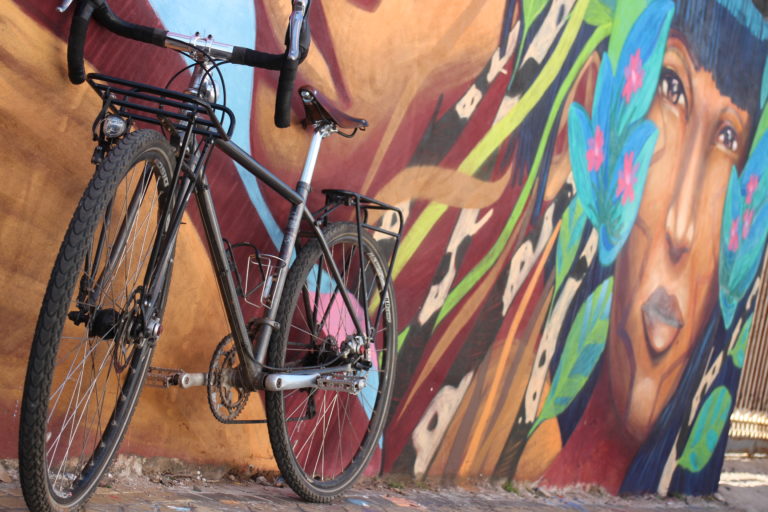 Mural from LatidoAmericano festival
Mural from LatidoAmericano festival
44 murals by 35 artists
During the the week-long festival, the artists worked passionately on the rediscovery of Paraguay. The end result is amazing: 44 murals in 40 different places, done by 35 artists from 12 different countries. Many different styles and techniques united by the spirit of Latin America and the mystic history of Asunción, turned from a purely aesthetic experience into a playground of past and present. Only one of the murals has been painted over by this date, because the religious owner of the house didn’t approve of its supposedly ‘satanic symbolism’. “But that’s how it is”, Oz says, “as a graffiti artist you learn to let go. Sometimes your works are there for only a few weeks and all that’s left of them afterwards is a photo or two for people to look at”. However, right now in Asunción, you don’t have to look at pictures or enter galleries to see the rest of the works. All you have to do is simply open your eyes and look around. And please do it, because this project is like a time machine which lets you enjoy the flow of present Latin American urban art whilst simultaneously rooting you deeper into the ground you’re standing on. So, people, get your asses to Asunción and check it out yourselves! And if you can’t do it, at least check out the pictures and videos below to see the rest of the works and the process involved in creating them.
Seeing Paraguay’s Street Art
The pieces of LatidoAmericano are all located in the historic center of Asunción, and as the distances are relatively small, it’s completely feasible to see them all on foot. I personally love rambling the street of Asunción on a bicycle. So, if you can get access to one, I advice you to do the same. Just keep in mind that cars are not too used to seeing cyclists on the roads and, therefore, don’t always remember to watch out for cyclists too attentively.
You can see a map of the LatidoAmericano murals here.
All photos by Sissi Korhonen
Follow Sounds and Colours: Facebook / Twitter / Instagram / Mixcloud / Soundcloud / Bandcamp
Subscribe to the Sounds and Colours Newsletter for regular updates, news and competitions bringing the best of Latin American culture direct to your Inbox.

